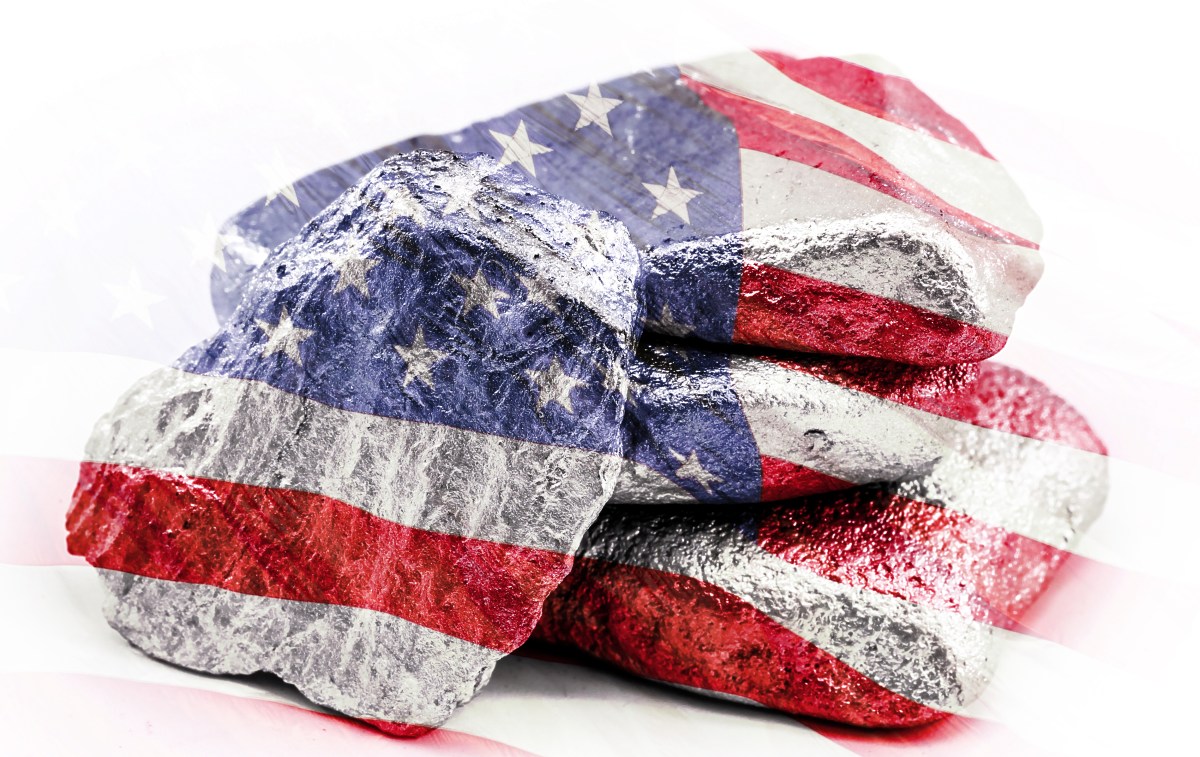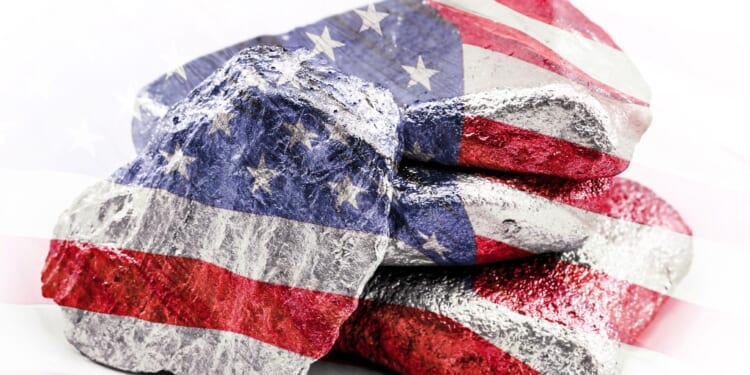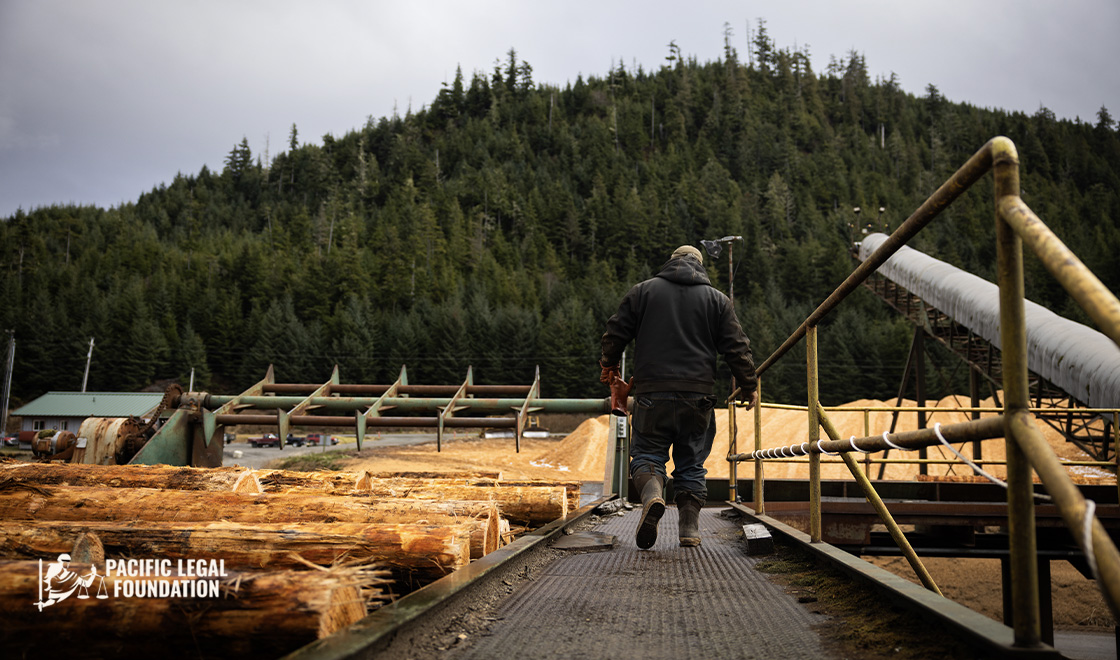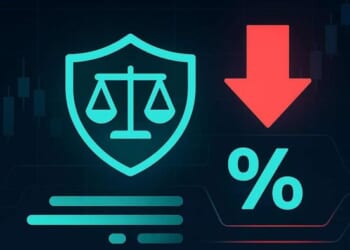![]() We’d appreciate your input on a few questions about environmental and energy policy. This brief survey should only take one minute to complete.
We’d appreciate your input on a few questions about environmental and energy policy. This brief survey should only take one minute to complete.
Your responses will help us better understand different perspectives on these important issues. All responses are confidential.
Welcome to Dispatch Energy! If you want an example of how government policy can produce irrational—and tragic—outcomes, look no further than the near-extinction of blue whales, humpbacks, and other whale species in the North Pacific during the mid-20th century. The environmental catastrophe was the result of Soviet Union-imposed production targets that valued tonnage over usable food, incentivizing one of the fastest exterminations of an animal population in history. Moscow imposed a ban on commercial whaling in 1986, but whale populations have never fully recovered.
D.C. Dabbles in Energy Ownership

There is a scene in Arrested Development in which a psychotherapist and his wife are experiencing a rough patch in their marriage and contemplate whether an open relationship would help. The therapist, Tobias Fünke, notes that the approach never works and couples merely delude themselves into thinking it will … before abruptly concluding that they might be the exception to the rule.
In unrelated news, the Department of Energy has announced that it will take a 5 percent stake in Thacker Pass, a new lithium mine in Nevada, in exchange for government loan guarantees. This decision comes on the heels of the government’s decision to take a stake in Intel, as well as a stake in the rare earth minerals company MP Materials. Shares in another company, USA Rare Earth, surged after its CEO stated that it was in talks with the Trump administration about potential government support, leading to speculation that the government could take partial ownership in that company as well.
But while these moves may seem like good “business deals” on behalf of U.S. taxpayers, such policies run a real risk of sowing the seeds for long-term problems with the productivity in those industries, leading to a future—borne out by historical and modern-day examples—where taxes are higher and production is lower.
The good.
The rationale for partial government ownership of these private companies makes some sense at first glance. In many instances, the government has already lent support to these companies in one form or another. The government’s stake in Thacker Pass, for example, is a part of a renegotiation of the Biden administration’s $2.26 billion loan guarantee for the project. Under that deal, taxpayers took on the risk of project failure and would have to repay defaulted loans. The value to the project from the taxpayers shouldering the risk of default is called a “credit subsidy cost” and reflects the subsidy received by the project.
The Trump administration’s renegotiation means that in exchange for taxpayers covering the credit subsidy cost, Thacker Pass will give the government a return based on the profitability of the venture. If the project is worthwhile, taxpayers will get a lot back and end up paying nothing. If it sinks, then taxpayers are still on the hook for any defaulted loans, which isn’t much different than the previous arrangement. I can understand perfectly why someone negotiating on behalf of taxpayers views government stakes as an effective way to reduce taxpayer liabilities while ensuring increased access to capital for U.S. companies—particularly ones that play a role in key infrastructure or national security.
But there’s a lot more to consider here.
The bad.
Government ownership of projects that would otherwise be the purview of private enterprise is not new. In fact, it is the norm in much of the world. Most of the world’s oil and gas production is done by state-owned enterprises, or SOEs. China, through its SOEs, controls much of the world’s mineral refining capacity. While most Americans are accustomed to buying their electricity from private companies, about half of the world’s electric power capacity is state-owned. On the surface, these efforts seem at least functional, but over time, the productivity of SOEs lags behind that of private companies.
The large increase in global oil production over the past two decades has been driven by America’s private companies, not SOEs. The recent surge in planned mineral production in the U.S. is driven by private companies seeking to compete with China. One of the few parts of the United States that had a completely publicly owned power company, Puerto Rico, took nearly a year to completely restore power after Hurricane Maria. By comparison, the infamous Winter Storm Uri in Texas—one of the worst recent blackouts in the country—had an average outage duration of 42 hours. (Puerto Rico has since privatized its electric power company.)
At the onset of the creation of these state-run companies, things seem good because governments tend to have a lot of capital and can also easily exempt their projects from bureaucratic delays that might tie up a private company. But over time, government-managed companies tend to be inefficient because they are insulated from the disciplining effects of the market and must respond to political demands over economic ones.
A private company cares about one thing: Profit. That might sound villainous, but this profit motive ensures the company invests in long-term productivity improvements to maintain its competitive edge (new equipment, staff training, etc.). It also ensures that, in cases where actions are not profitable, the company has a motivation to reduce those actions (e.g., an oil company won’t drill for oil where there is none to be had).
A state-owned company, on the other hand, has no such need for long-term success. The company does well? Who cares; they don’t get the profit. The company does poorly? Who cares; the taxpayers will absorb any losses. Political oversight can provide some accountability, but it rarely reaches the efficiency of the private sector.
In the best-case scenario, the state ends up with something like the Tennessee Valley Authority, a power company formed as part of the New Deal that is perpetually plagued with cost overruns and debt. In the worst case, state ownership devolves into the Venezuela model of energy production. For years, the government plundered the state-owned oil company’s profits, failing to explore new sources of oil and eventually leading to the collapse of social programs supported by oil revenues when prices fell.
Though, of course, it should be noted that the Thacker Pass case is different. A 5 percent stake doesn’t equate to total government control. But as fellow Dispatch contributor Scott Lincicome notes, even the marginal 10 percent stake the government has in Intel is appearing to harm the productivity incentives within the company, and increasing risks to industry investors.
The ugly.
Still, politicians make mistakes all the time, and while it is frustrating that they make those mistakes with my money (and yours) instead of their own, these expenditures are at least small potatoes in the grand fiscal picture. But there is one thing that I find much more concerning about the government’s recent forays into business: They send a strong signal to the rest of the economy that successful businesses aren’t the ones that produce the most for the least cost, they’re the ones that can secure a deal with the White House.
There is evidence of this in the sudden rise of USA Rare Earth’s stock. The stock price is going up because demand for the stock is going up, meaning investors are putting their money there instead of in another company. In a perfect world, it shouldn’t matter what companies a given presidential administration is talking to; all should be able to enter the market and compete on the merits. But the rise in stock prices reflects a growing recognition among businesses that the government can make it hard to produce or easy to produce, and their money is safer in the ventures that the government has blessed.
In the short term, the result will likely be a surge of capital and interest into industries that politicians argue have been underinvested in or have national security benefits. In the long term, this means investors will care less about what things consumers actually want and more about what sales pitch works best in Washington.
That’s a big problem because of the opportunity costs: Even though it may look like the government-favored industries are doing well, the effect is that capital from other industries is redirected. This trade-off is almost never presented in political discourse, but it is nevertheless vital. And government is just generally bad at picking winners, as Kevin Williamson and I discussed on The Dispatch Podcast earlier this month. The opportunity costs that come from government investment in the private sector are hard to know, but they are certainly still present as the companies I seek to buy from must compete with government-favored ventures for capital.
But maybe it will work for us?
Of course, the wisdom of Arrested Development’s Tobias Fünke may apply here: This time the right people are in government to steer money more efficiently than their predecessors. I can see the appeal of this idea; the United States has enormous lithium reserves, and there’s a huge global demand for the mineral driven by electric vehicle growth. Much of that productivity is locked behind government bureaucracy rather than unleashed by market dynamics.
But politicians should be warned that this is not a new idea; it’s a very old one with a bad track record. Applying government power to near-term policy objectives might seem like a path to success, but history tells us that in the long term, the trade-offs are almost always worse than the benefits of government meddling in the private sector.
Alaska loggers fight industry-crushing rules.
Whether you realize it or not, timber from Alaska’s Tongass National Forest plays a significant role in your life. It’s used in homebuilding, boat and airplane construction, and even in Steinway pianos. But if federal regulators have their way, the remote sawmills of southeast Alaska that turn Tongass timber into usable lumber will soon shutter for good—destroying a once-vibrant industry and threatening the communities it supports.
Policy Watch
- Several environmentalist groups are shifting their focus to include anti-authoritarian messaging, Politico reported Monday. The new tactic comes from a growing recognition that their policy advocacy will achieve few long-term successes if presidential administrations can undo the initiatives of their predecessors, as the Trump administration has done with a number of Biden administration policies. The League of Conservation Voters, for example, recently announced a partnership with voting rights organizations to combat Trump’s “Project 2025 agenda.” While proponents believe this confluence of issues is important to environmentalism, critics worry that the efforts will reduce support for environmentalism by tying it to largely unrelated and often controversial issues. Speaking to Politico, Lisa Frank of Environment America noted, “[Creating] those kinds of purity tests on unrelated non-environmental issues is a big part of what got us into the mess we are in today, where far fewer Americans identify as environmentalists than they did decades ago.”
- On Monday, a coalition of businesses and other organizations launched a new carbon accounting effort called Carbon Measures. Founding members include major industry players such as ExxonMobil, Mitsubishi Heavy Industries, and NextEra Energy. The objective is to establish accurate, ledger-based carbon accounting of production. For private sector firms seeking to decarbonize, the effort is likely to be useful by helping them identify the least emission-intensive suppliers available.
- The Net-Zero Banking Alliance, a United Nations climate initiative launched in 2021, is ceasing operations. The effort initially involved 43 banks focused on increasing investment in low-carbon technologies. The alliance’s disbandment appears to be part of a trend, Axios reports, as financial groups focused on climate efforts pause work and leave climate initiatives.
Innovation Spotlight
- In an effort to expedite the production of nuclear fuel, the U.S. Department of Energy recently selected Oklo Inc., a California startup, to construct three facilities. Nuclear fuel is typically fissionable material (uranium isotope 235, plutonium, etc.) that is inserted into a reactor. As the United States’ domestic fuel production has waned, most of the nuclear fuel used in American power plants is imported, with some even coming from Russia. But an additional concern is that the specific formulations of fuel for use in future “advanced nuclear” reactors are not being produced because there is no market demand yet, creating a chicken-and-egg problem for the industry. The DOE’s partnership with Oklo will focus on creating fuel for those advanced nuclear facilities, which utilize more modern and safer nuclear technology than the conventional nuclear plants that were constructed in the mid-20th century. Currently, there is only one advanced nuclear power plant in commercial operation in the United States, Vogtle 3, but the recent push to boost domestic fuel production comes on the heels of companion efforts to expedite the licensing and construction of advanced nuclear power plants.
Further Reading
- Is the next major climate report from the United Nations going to trade scientific method for guesswork? That’s a question I arrived at after reading fellow Dispatch Energy contributor Roger Pielke Jr.’s essay for the Honest Broker. The Intergovernmental Panel on Climate Change, or IPCC, represents the body that attempts to collate our scientific understanding of climate change and its effects. While politicians love to put their spin on IPCC findings, the reports themselves tend to be dry and of a higher quality than critics would lead one to believe. But Pielke notes an ongoing shift that could change that. Past IPCC reports have focused on trying to determine the detectable effects of climate change, but the IPCC is bringing on new authors who have made their bones on the much shakier “extreme event attribution” method, which attempts to determine how climate change worsens observed weather events. Scientists favoring this method may run into problems as they make contradictory claims about the effects of climate change by looking only at specific events, rather than aggregate impacts. “If only we reduce emissions, the argument goes, we can also modulate extreme weather. In this logic, every extreme event becomes about energy use, and not about exposure, vulnerability, and the local decisions that have seen disaster deaths drop to their lowest in human history,” Pielke writes. “Scientific assessment can be challenging in the best of circumstances. When an assessment is taken over to serve politics it ceases to be an assessment and turns into something else.”



















